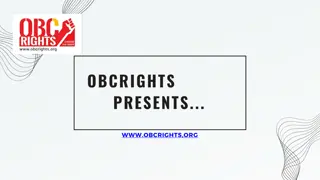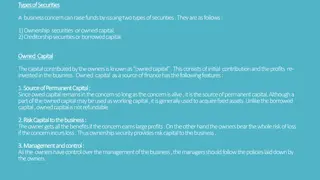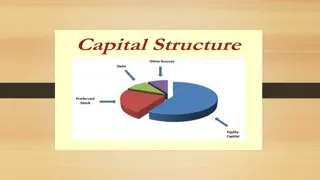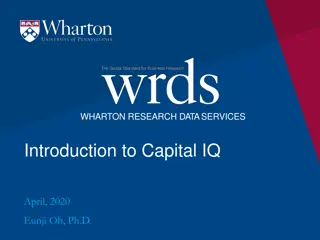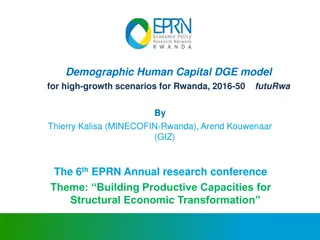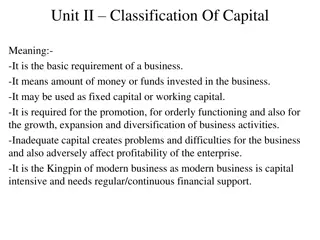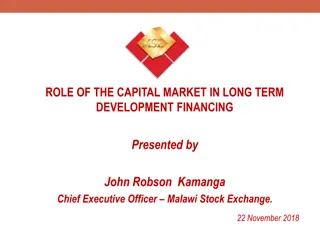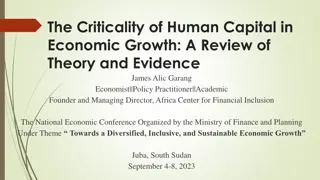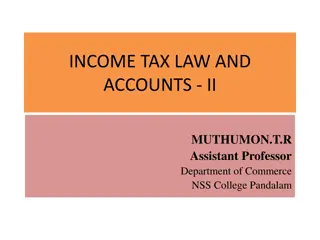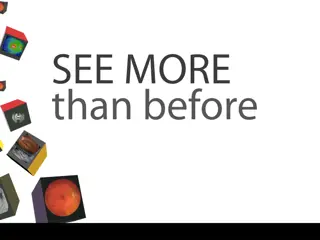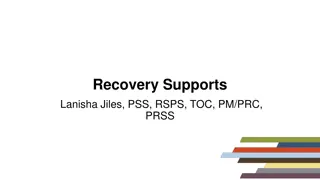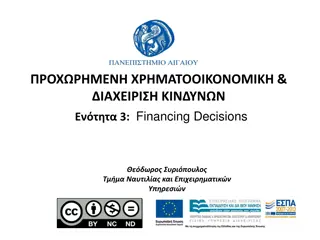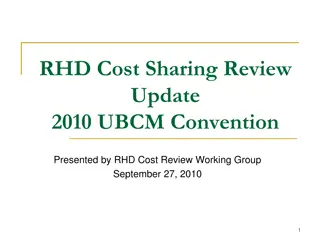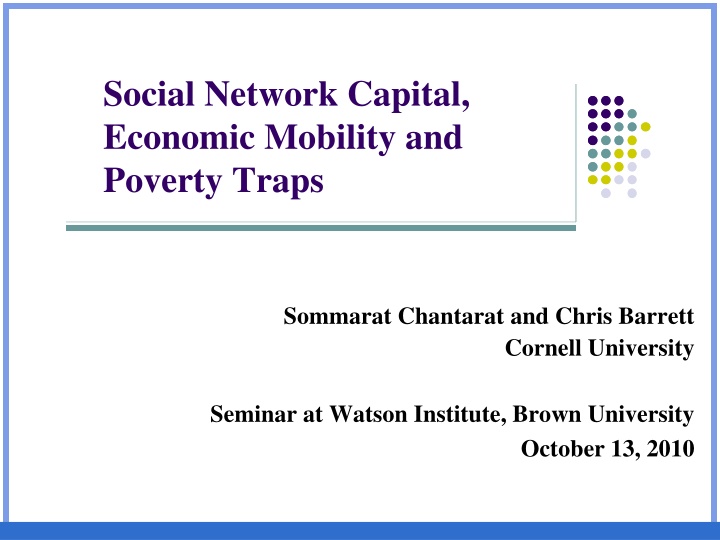
Social Network Capital, Economic Mobility and Poverty Traps
Explore the interplay between social network capital, economic mobility, and poverty traps through the lens of asset accumulation, financial market failures, and social economics of poverty. The paper delves into the mechanisms of how endogenous social network capital can either facilitate or hinder the escape from persistent poverty by treating it as a productive asset that households can accumulate and utilize for intertemporal productivity growth.
Download Presentation

Please find below an Image/Link to download the presentation.
The content on the website is provided AS IS for your information and personal use only. It may not be sold, licensed, or shared on other websites without obtaining consent from the author. If you encounter any issues during the download, it is possible that the publisher has removed the file from their server.
You are allowed to download the files provided on this website for personal or commercial use, subject to the condition that they are used lawfully. All files are the property of their respective owners.
The content on the website is provided AS IS for your information and personal use only. It may not be sold, licensed, or shared on other websites without obtaining consent from the author.
E N D
Presentation Transcript
Social Network Capital, Economic Mobility and Poverty Traps Sommarat Chantarat and Chris Barrett Cornell University Seminar at Watson Institute, Brown University October 13, 2010
Motivation: builds on two literatures 1. Poverty Traps Do households face multiple equilibria, one of them associated with low well-being? If so what can be done, and how, to help poor households escape poverty traps? Literature increasingly based on the study of intertemporal asset accumulation Most poverty traps depend on financial market failures that impede investment in productive assets or technologies (Loury 1981, Banerjee and Newman 1993, Galor and Zeira 1993, Mookherjee and Ray 2002-3, Carter and Barrett 2006, etc.)
Motivation: builds on two literatures 2. Social Economics of Poverty Multiple pathways of socially mediated growth Facilitate productivity growth and technological adoption (Foster and Rosenzweig 1995, Conley and Udry 2010, Moser and Barrett 2006) Enhance access to (informal) finance and insurance (Townsend 1994, Fafchamps and Lund 2003) Market intelligence, contract enforcement, etc. (Fafchamps 1996, Fafchamps and Minten 2002) Existence of exclusionary mechanisms that prevent some individuals from such socially mediated growth (Voluntary) social isolation or (involuntary) social exclusion from social networks that otherwise can facilitate growth (Carter and May 2001, Adato et at. 2006, Santos and Barrett 2006, etc.) Most literature treats social networks as exogenous to one s choices
Contribution of this paper We provide a theoretical foundation of the mechanisms by which endogenous social network capital can facilitate or impede the poor s escape from persistent poverty by Including social network capital as another productive asset that households can accumulate (by forming a network of social links) and use to enable intertemporal productivity growth Treating each mutually consensual link as the result of individuals cost- benefit calculus with respect to prospective links with others, depending on social distance and the economy s observable wealth distribution Modeling endogenous network formation in the presence of financial market failures and a non-convex production technology set that generates multiple equilibria of long-run well being
Key Findings Social network capital can either substitute for or complement real capital in facilitating escape from poverty depending on the poor s initial capital endowment Heterogeneous patterns of economic mobility can arise: (1) exit poverty without using social network, (2) exit poverty using social network capital, (3) social exclusion, (4) social isolation A household s welfare dynamics depend not only on its own initial endowment, but on the economy s initial wealth distribution as well Crowding-in transfers through endogenous social networks become possible in this setting
The Model: Assumptions Thereare n heterogeneous households in this small agrarian economy: N= (1,2, ,n) Each lives for two periods: t = 0,1 Each is born with two endowments: (A0 ,S0) Productive assets: A0 Social network capital: S0 Identical preferences Absence of financial markets Identical production technology set
The Model: Production technology Two available production techniques at any period t: ( ) High-return production requires fixed cost of : ( ) ) ( t t H t S F A f Y = F and ( ) 0 F tS with ( ) ( ) = H 0 , 1 0 0 tS F tS F Low-return production: ( ) t L t A f Y = L Assume: for standard concavity conditions are satisfied ( ) ( ) ' ' , Inada and 0 0 , NA f NA f NA t H t L i Household i s aggregate production function at any period t: Max Yit= [ it it Y Y , ] = Max[ f ( ) ) it ( ) H L ( , ] A F S f LA H it it
The Model: Production technology This production technology set is non-convex and exhibits locally increasing return in the neighborhood of s.t. ( ) , Y A S ( ( ) S ) t t t f A F is the asset H t t threshold beyond which a household will optimally switch to the high-return production ( ) f LA t tA ( ) ( ) A F tS tS
The Model: Production technology Social network capital reduces the productive asset stock necessary to make the high-return technology optimal Value of social network capital will vary across households with heterogeneous endowment of productive assets ( ) ( ( ) ' t ) , Y A S f A F S t t t H t When acquiring more social network capital , and so ( ) ( ) t t S A S A ( ( ) S ) f A F H t t t ( ) S S S t ( ) ( ) S F f LA t ' F t t ' tA ( ) A ( ) ' F tS tS
The Model: Households unilateral dynamic welfare maximization problem Household i maximizes Period 0: household allocates income Y(Ai0 , Si0) among Consumption: Ci0 Investment in A: Ii0 (unilateral choice) Investment in S: Xi0(bilateral choice) which costs Period 1: individual consumes all income and He will consume Ci1 from all income Y(Ai1 , Si1) Subsistence consumption constraint:
The Model: Households unilateral dynamic welfare maximization problem For any desired network , household i can derive the corresponding indirect utility by solving: subject to:
Endogenous network formation Who in the economy will hh consider for a prospective link? Consider those within the feasible social distance for interaction How to choose with whom to link? Complementarities and interdependence of links decisions Choose among possible networks of links rather than individual links Intertemporal benefit-cost calculus of social links Rank all feasible networks based onthe corresponding indirect utilities Mutual consent requirement and equilibrium of social network Non-cooperative extensive form game with perfect information
Endogenous network formation 1. Social distance, cost and benefit Social distance between i and j: Total costs to establish a network Xi0 iswhere Cost to i to establish a link with j: Total benefits from an established network Xi0 is where Benefit to i from an established link with j:
Endogenous network formation 2. Social network structure For a household i Consider an economy with N=(1,2,3,4,5) and = Denote binary link between i and j: ij 9 d Household i s network: where Set of i s all possible network: i From the example: with ( ) ( ) ( ) 34 x 0 0 = 9 d 31 x with ( ) 1 , 0 3 x = 32 X x k 3 0 1 0 0 1 1 0 1 = 0 , 0 , 1 , 0 , 1 , 0 , 1 , 1 3 0 1 0 1 1 1
Endogenous network formation 3. Linking game with perfect information Consider an economy with N=(1,2,3,4,5) and Households form a ranking of networks based on their indirect utility. = 9 d Mutual consent requirement impedes use of off-the-shelf solutions . Need to use a noncooperative, extensive form game with a link formation protocol. Players use their network ranking as best response functions
Endogenous network formation 3. Linking game with perfect information ( ) ( ) 13 12 1 0 1 0 x Endogenous network formation = = Ranked , , , 1 1 1 0 0 x Round 1 Round 2 Round 3 ( ) ( ) 23 ( ) ( ) ( ) 34 x 21 0 1 1 0 x = = Ranked , , , No No HH1: 2 2 2 1 1 0 0 x 0 = Match Match * 1 establishe d 3 3 X 1 31 x 0 32 x = Ranked = No Match * 2 HH2: 3 3 X 3 1 HH3: Match Match 1 1 1 0 0 1 1 1 0 0 1 = No Match * 3 = 1 X 4 2 0 , 1 , 0 , 1 , 1 , 0 , 1 , 0 0 1 1 1 1 0 0 0 0 0 = Match * 4 HH4: 5 X ( ) ( ) 45 ( ) 54 x 1 43 0 1 0 1 x = = Ranked , , , HH5: 4 1 1 0 0 x 0 , 1 = * 5= Match 1 4 X = Ranked 5
The benchmark case: no social network S0 = 0 and X0 = 0 A A static asset poverty line exists at the asset threshold that defines the technology choice, distinguishing current poor and non-poor. The dynamics in particular the autarkic savings options suggests the existence of a dynamic asset poverty line such that the initially poor with * 0 A A will save and escape poverty eventually i * * 0 A A 0 will be trapped in long-term poverty 0 0 A Ai Each household s initial endowment of productive assets thus determines its long-term well-being
The possibilities of social network capital (S0 0 and X0) The static asset poverty line is now set at the general asset threshold ( ) A such that ) ( 0 i i S F S A H f [ ( Lf [ ( ) ] = ] ) 0 iS A 0 iS 0 Social network capital reduces the assets needed to be non-poor. A dynamic asset poverty line now depends not only on initial endowments (Ai0,Si0) but also on the poor s opportunity to establish a productive social network, Xi0 ( A ) 0 = * 0 / A dynamic asset threshold exists. The initial poor with ( ) ( ) 0 0 0 0 0 0 / i i i i S A A X S A = ( ) ( ) 0 0 0 0 0 0 / i i i i S A X S A A = S X 0 0 i i * escape poverty w/o needing new social links must form new networks to escape *
The limitations of social network capital (S0 0 and X0) ( ) C * 0 i 0 X The initially poor who failed to meet (either because of inadequate endowment (Ai0,Si0) or there is no feasible productive network Xi0), will never consider establishing a network with others as ( 0 0 0 i iL i iL X U X U = , 0 i 0 H i ) X ( ) 0 * * For them, social networks do not provide a viable escape from persistent poverty. They self-select out of social networks: social isolation
Four patterns of social network-mediated economic mobility and immobility among initial poor Households who escape from poverty without forming social networks: 0 i X and 0 = = i iH i X U U ( either or he failed to establish 0 0 i i X such that ( ) 0 ( ) X ( ) 0 0= = * * * * * iH * iH , ) 0 = U X U ) X X 0 ( 0 ( 0 0 i i i i * iH * iH U U X 0 0 i i Households who form social networks and escape from poverty (using social network capital to either substitute for or complement to own assets) ( ) 0 U = * i * i * iH * 0 i 0 and X U X Households involuntarily excluded from networks and trapped in poverty 0 i X , 0 = = i iL i X U U and 0 i X network arises in equilibrium ( ) 0 0 ( ) 0 ~ ~ X 0 i 0= * 0 i * * * * such that but no such C H i Households who choose social isolation and remain trapped in poverty ( 0 = = i iL i X U U and 0 H i C . 0 i X is their top-ranked network choice in ( ) ) 0 0= * 0= * * i * * * , for all and so 0 0 X X X 0 0 0 i i i Ranked i0
Patterns of social network-mediated economic mobility and immobility ( ) For the initial poor ( ) A A S 0 0 i i ( ) * 0 In A ( ), social network capital substitutes for own capital A A A S 0 0 i i Ai * 0 In B and C ( ), social network capital complements own capital Those in A and B are endowed with enough that they are independently mobile A Never poor 0 A * 0 A B D ( ) 0 = * 0 / A S X 0 0 C ( ) A 0 S Initially poor Those in C need to accumulate more social network capital by forming new social networks
Different patterns for an autarkically mobile household a a a a
Different patterns for a household autarkically mobile given its S0 b b b b
Different patterns for a household whose mobility depends on social links c c c c
Different patterns for a destitute, economically immobile household ci ci ci ci
Network endogeneity, socio-economic structure and socially-mediated growth - Greater wealth dispersion limits social links and thus socially mediated growth, trapping more people in poverty. - But polarization can enable solidarity groupings and mobility.
Targeted transfers and crowding in possibilities due to network endogeneity e f e h f h
Conclusions Social network capital can facilitate escape from poverty by complementing own capital for those who lack sufficient assets or substituting and thus conserving scarce resources for those who would escape otherwise But because social links are costly to establish and require mutual consent, there will commonly be social isolation and exclusion in the equilibrium The equilibrium social network arrangements and the resulting well-being dynamics depend fundamentally on initial wealth distribution in the economy, not just on household endowments (but also on their social distance from others)
Implications Empirical work establishing correlation between well-being dynamics and measures of social embeddedness typically seeks just one of these types of relations highly context-specific Work that finds no correlation can be an artifact of widespread social exclusion and social isolation Crowding-in transfers are possible through endogenous network, in contrast to the widely claims of crowding-out effects (which typically treat social network as exogenous)
Thank you for your attention Comments are greatly appreciated





